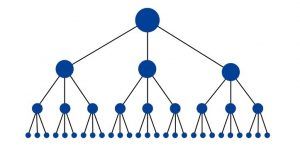
Web design isn’t just about aesthetics; it’s about how a site is put together under the hood. Design choices can have a big impact – positive or negative – on a site’s SEO. In turn, this can affect the site’s performance over its entire lifetime.
If you’re a professional web designer (or if you’re creating your own site from scratch), it’s important to know a few SEO basics – a little knowledge goes a long way to building sites that reach their intended audience. Understanding these 10 aspects of SEO will help you design sites that work well, in addition to looking great.
1. Site structure
Every site should be designed with a clear, logical structure[1] in mind. The homepage should state the big picture purpose of the site – its reason for existing – and details should be broken down into subpages.
For example, if you’re designing a website for recipes, the home page could lead to separate category pages for dinners, soups, and desserts. Each of those subpages could then lead to individual recipe subpages of their own.
It’s fine to have several ‘layers’ of subpages on your site, but don’t go too deep or Google might have trouble crawling all of them. In general, try to keep your site’s depth to three or four layers. Here’s a visual from Moz[2] of what a well-structured site looks like:
A site’s homepage should lead to its subpages, which lead to their own subpages, and so on.
2. URL structure
URLs affect a site’s SEO, so it’s important to choose good ones right from the start. Here are a few best practices to follow for


